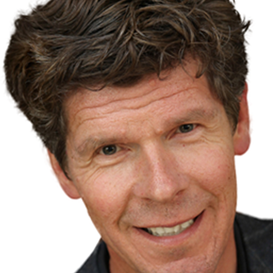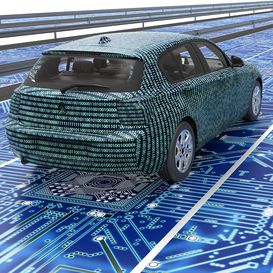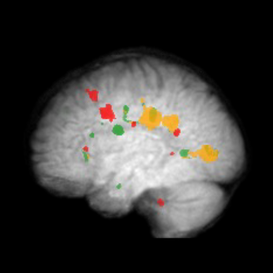IT-V Medizintechnik
Achieving a better position in international innovation
In Innsbruck, Austria, IT-V Medizintechnik began life under the name Innovative Technologie Völp. Today, the former name is reserved for their distribution arm, which oversees the provision of their innovative patient positioning systems across Europe and as far away as the USA, Australia and Japan. This international outlook helped them make the most of their first ITEA project, STARLIT, as CEO Markus Völp explains.
Open-minded cooperation
First, a trip down memory lane. “With a friend of mine, I was working for the Biological Centre for Radio Oncology in Innsbruck and he had a patent on a machine for measuring oxygen in cancer cells,” Markus recalls. “In 1997, he asked me to start a company to do these things. I didn’t want to carry on with biology, so I started to develop patient positioning devices. I met some people from the University Hospital of Innsbruck to do this with, so IT-V was the result of a scientific cooperation. Since then, we have consistently been developing innovative positioning devices and solutions for patient immobilisation and positioning in radio oncology, treatment and CT scanning. We are also filing numerous patents for the biomedical high-tech sector. Our corporate philosophy is open mindedness when working with our highly-valued customers.”
Positioning devices in the radiology field
In oncology – the branch of medicine devoted to cancer – linear accelerators (or LINACs) are often used to treat tumours; these LINACs customise high-energy x-rays or electrons to match the tumour’s shape while sparing the healthy surrounding tissue. Correct patient positioning is therefore crucial to avoiding incorrect treatment and undesirable side effects. In addition to this, patients must remain still throughout treatment and maintain the same position across many treatment sessions, regardless of how many are necessary. To ensure this, IT-V provides hardware, such as highly specialised site-specific devices with multiple reproducible settings, on which patients can lie. This ensures that patient movement is kept to the absolute minimum and enables the most accurate treatment; it also includes other devices such as a mask system to prevent movement of the head.
“Worldwide, there are only four or five companies in the business of positioning devices in the radio-oncology field,” Markus notes. “And at the moment, there are only two big companies producing linear accelerators: Elekta and Varian. Back in the beginning, when we were starting with positioning devices for standard treatment, I was dealing with a company called Medical Intelligence. This company was developing positioning devices for stereotactic treatment, a very precise form of therapeutic radiation. Elekta acquired Medical Intelligence, so we began collaborating with Elekta and are now distributing our products globally via them. But we still maintain very strong collaboration with our clinical partners, not only with the University Hospital of Innsbruck but with partners like the LMU Munich and UMC Utrecht.”
The advantage is that you’re meeting people from all over Europe, which leads to better networking and, ultimately, more chances and opportunities.
A deeper dive
It was through this relationship with Elekta that IT-V came to be involved in STARLIT, an ITEA project that ran from 2017 to 2020. This combined cancer interventions and monitoring in real time to increase radiation accuracy and minimise unintended doses to healthy tissue. One of STARLIT’s use-cases focused on MR-LINAC, a linear accelerator that combines magnetic resonance (MR) imaging with radiation therapy. Markus: “Elekta and Philips were the two main partners developing these MR-LINAC devices, which are primarily run by software. With traditional treatment, you typically only perform a CT scan at the beginning and sometimes during the treatment. The innovation in MR-LINAC is that during the treatment, you can visualise where the tumour is moving in real time.”
“Doing our part for the positioning devices was a unique chance for us to get a deeper dive into Elekta. We also met key people from the Netherlands Cancer Institute and other companies, so it was a very good collaboration for us. We gained much more knowledge about the MR field because before that we had positioning devices for traditional treatment and were a bit more CT-oriented. MR is becoming more prevalent in radio-oncology, replacing or adding to normal CT scans. STARLIT helped us a lot to gain more knowledge on this and now we have a new family of products for MR.”
Beyond the norm
Since its foundation, IT-V has been involved in publicly funded research projects around every two or three years, but this experience with ITEA was quite unlike their previous participations. For a start, most Austrian projects are centred on a single company or a partnership between two, whereas STARLIT brought together 14 partners from Austria, Canada, the Netherlands and Sweden.
“The advantage is that you’re meeting people from all over Europe, which leads to better networking and, ultimately, more chances and opportunities. I think it’s a very good thing that this exists and is helping to bring people together. Plus, if I remember correctly, you receive better funding from the Austrian government if you’re involved in an ITEA project,” Markus smiles. “Of course, I am grateful for this money – we can afford things which we wouldn’t normally do if we didn’t have these publicly funded research projects. With this in mind, we can guarantee that our products will adapt to all the changing requirements in clinical practice and meet the highest standards of application, precision and increased efficiency during the treatment process.”
More information:https://www.it-v.net/

Other chapters
Use the arrows to view more chapters

Editorial
By Jan Jonker

Country Focus: Austria
Tapping into innovative potential and using new knowledge for market growth

IT-V Medizintechnik
Achieving a better position in international innovation

ITEA Success story: PIANiSM
Pioneering predictive maintenance for a smarter future in manufacturing

Advancing gender equality in innovation
Insights for ITEA from Vinnova

ITEA Success story: EMPHYSIS
EMPHYSIS: Bridging the gap between digital simulation and embedded software with eFMI®

Community Talk with Jennifer Overbury
Smart project management in a technical domain

SME in the Spotlight: icometrix
Transforming neuroimaging with AI

End user happiness: Mad@Work
Digital solutions enhancing personal well-being and organisational success

